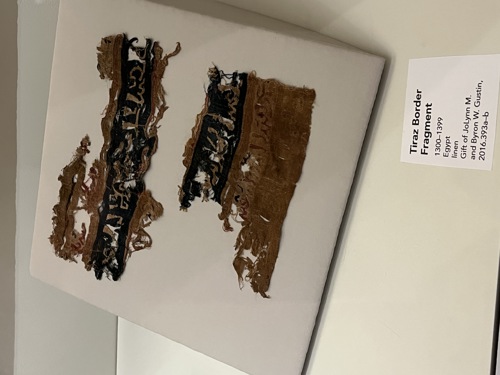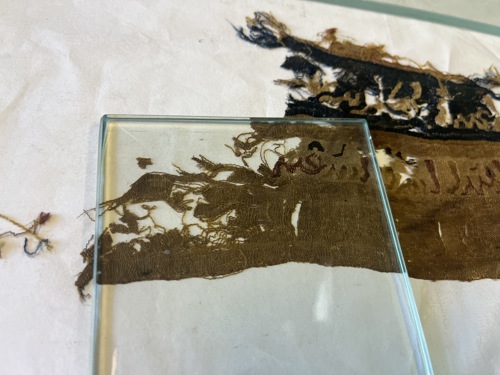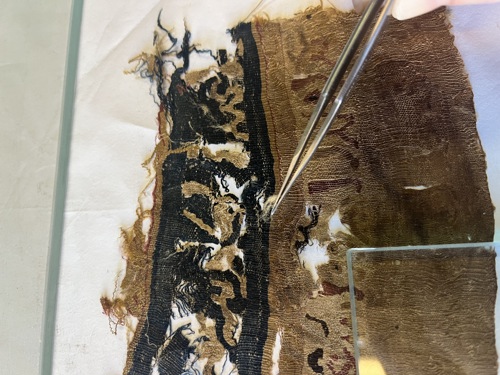- Art Home
- Exhibitions
-
Explore the Collection
- Explore the Collection Home
- African Art
- American Paintings, Sculpture and Drawings
- Contemporary
- Decorative Arts and Design
- East Asian Art
- European Paintings, Sculpture and Drawings
- Fashion Arts and Textiles
- Musical Instruments
- Indigenous American Art
- Photography
- Prints
- South Asian Art, Islamic Art and Antiquities
- Conservation
- Meet the Curators
- Digital Resources
- Events & Programs Home
- Calendar
- Accessibility
- Adults
-
Families & Teens
- Families & Teens Home
- 10x10 Teen Art Expo
- Art on the Rise
- Art Together: Art Making for Families with Children Ages 3–5
- Baby Tours
- Boy Scouts / Girl Scouts
- CAM Kids Day
- Choose Your Own Gallery Adventure
- Family Storytime and Gallery Walk
- Family Studio: Art Making for Families with Children Ages 6–12
- REC Reads
- Rosenthal Education Center (REC)
- See Play Learn Kits
- Summer Camp
- Teachers
- Community Outreach
- Fundraisers
- Plan Your Own Event

- Art Home
- Exhibitions
-
Explore the Collection
- Explore the Collection Home
- African Art
- American Paintings, Sculpture and Drawings
- Contemporary
- Decorative Arts and Design
- East Asian Art
- European Paintings, Sculpture and Drawings
- Fashion Arts and Textiles
- Musical Instruments
- Indigenous American Art
- Photography
- Prints
- South Asian Art, Islamic Art and Antiquities
- Conservation
- Meet the Curators
- Digital Resources
- Events & Programs Home
- Calendar
- Accessibility
- Adults
-
Families & Teens
- Families & Teens Home
- 10x10 Teen Art Expo
- Art on the Rise
- Art Together: Art Making for Families with Children Ages 3–5
- Baby Tours
- Boy Scouts / Girl Scouts
- CAM Kids Day
- Choose Your Own Gallery Adventure
- Family Storytime and Gallery Walk
- Family Studio: Art Making for Families with Children Ages 6–12
- REC Reads
- Rosenthal Education Center (REC)
- See Play Learn Kits
- Summer Camp
- Teachers
- Community Outreach
- Fundraisers
- Plan Your Own Event
Blog
Blog
- Home
- Plan Your Visit
-
Art
- Art Home
- Exhibitions
-
Explore the Collection
- Explore the Collection Home
- African Art
- American Paintings, Sculpture and Drawings
- Contemporary
- Decorative Arts and Design
- East Asian Art
- European Paintings, Sculpture and Drawings
- Fashion Arts and Textiles
- Musical Instruments
- Indigenous American Art
- Photography
- Prints
- South Asian Art, Islamic Art and Antiquities
- Conservation
- Meet the Curators
- Digital Resources
-
Events & Programs
- Events & Programs Home
- Calendar
- Accessibility
- Adults
-
Families & Teens
- Families & Teens Home
- 10x10 Teen Art Expo
- Art on the Rise
- Art Together: Art Making for Families with Children Ages 3–5
- Baby Tours
- Boy Scouts / Girl Scouts
- CAM Kids Day
- Choose Your Own Gallery Adventure
- Family Storytime and Gallery Walk
- Family Studio: Art Making for Families with Children Ages 6–12
- REC Reads
- Rosenthal Education Center (REC)
- See Play Learn Kits
- Summer Camp
- Teachers
- Community Outreach
- Fundraisers
- Plan Your Own Event
- Give & Join
- About
- Tickets
- Calendar
- Exhibitions
- Blog
- Shop
Behind the Scenes in Conservation: Small Wonders: Tiraz Textile Fragments
by Obie Linn, Conservator of Textiles
1/4/2024
CAMConservation , tiraz textiles , textile conservation
Check out some small wonders from the world of textile artwork! Tucked in a corner of a display case in the JoLynn and Byron Gustin Gallery of Islamic Art (G146) you will find a fabric-covered panel highlighting a piece from the museum’s collection of tiraz fragments, inscribed textiles from the early Islamic period.
This small, easily overlooked corner display offers a peek into the ancient world via textiles. The piece here rotates every six months, so there is a new fragment of ancient fabric to see and think about often, including this newest installation which arrived in December. Tiraz fragments, such as this one, don’t undergo much conservation; their extreme age and fragility mean it is usually best to leave “as they are” and appreciate them as excavated fragments.
The newest installation underwent a little passive humidification using a barrier of Goretex© which allows water vapor but no liquid to reach the textile and help it to relax. I used glass weights and flat tweezers to help ease some folded pieces of the fragment into improved positions. I also found some old “cotton wool” clinging to the fragment! Unspun cotton was sometimes used to pack and protect delicate objects, such as this, at archaeological excavations. It is not original to the object, so I removed it with tweezers, which counts as “surface cleaning” in conservation. You might say the fragment was “cleaned and pressed,” though not in the way the phrase is usually applied!

The tiraz fragment on display in Gallery 146.

The tiraz fragment undergoing “passive humidification.” The “sandwich” of materials includes a damp blotting paper (unseen here), a piece of Goretex© barrier (the white stuff under the object), the fragment, a glass weight to gently press it down and hold the fragments while they relax due to the humidity provided by the blotting paper.

Held in a flat tweezer is a fragment of “cotton wool,” a material probably used to pack and protect the fragment decades ago.
Tiraz border fragment, 1300–1399 CE, Egypt, Mamluk period 1250–1517, linen, Gift of JoLynn M. and Byron W. Gustin, 2016.393ab
Cincinnati, OH 45202
Toll Free: 1 (877) 472-4226
Museum Hours
Museum Shop
Terrace Café
Library
The Cincinnati Art Museum is supported by the generosity of tens of thousands of contributors to the ArtsWave Community Campaign, the region's primary source for arts funding.

Free general admission to the Cincinnati Art Museum is made possible by a gift from the Rosenthal Family Foundation. Exhibition pricing may vary. Parking at the Cincinnati Art Museum is free.
Generous support for our extended Thursday hours is provided by Art Bridges Foundation’s Access for All program.

General operating support provided by:



